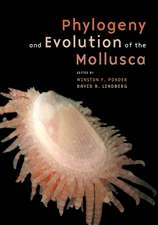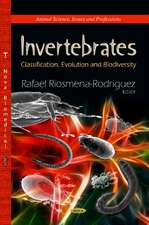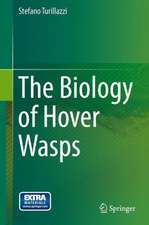Biology of Termites: a Modern Synthesis
Editat de David Edward Bignell, Yves Roisin, Nathan Loen Limba Engleză Paperback – 8 noi 2014
| Toate formatele și edițiile | Preț | Express |
|---|---|---|
| Paperback (1) | 1829.86 lei 6-8 săpt. | |
| SPRINGER NETHERLANDS – 8 noi 2014 | 1829.86 lei 6-8 săpt. | |
| Hardback (1) | 1833.65 lei 6-8 săpt. | |
| SPRINGER NETHERLANDS – 21 oct 2010 | 1833.65 lei 6-8 săpt. |
Preț: 1829.86 lei
Preț vechi: 2231.53 lei
-18% Nou
Puncte Express: 2745
Preț estimativ în valută:
350.25€ • 380.58$ • 294.40£
350.25€ • 380.58$ • 294.40£
Carte tipărită la comandă
Livrare economică 21 aprilie-05 mai
Preluare comenzi: 021 569.72.76
Specificații
ISBN-13: 9789400794955
ISBN-10: 9400794959
Pagini: 596
Ilustrații: XIV, 576 p.
Dimensiuni: 155 x 235 x 31 mm
Greutate: 0.82 kg
Ediția:2nd ed. 2011
Editura: SPRINGER NETHERLANDS
Colecția Springer
Locul publicării:Dordrecht, Netherlands
ISBN-10: 9400794959
Pagini: 596
Ilustrații: XIV, 576 p.
Dimensiuni: 155 x 235 x 31 mm
Greutate: 0.82 kg
Ediția:2nd ed. 2011
Editura: SPRINGER NETHERLANDS
Colecția Springer
Locul publicării:Dordrecht, Netherlands
Public țintă
ResearchCuprins
1. An introduction to termites: biology, taxonomy and functional morphology.- 2. Termite phylogenetics and co-cladogenesis with symbionts.- 3. Evolution and function of endogenous termite cellulases.- 4. Altricial development in wood-feeding cockroaches: the key antecedent of termite eusociality.- 5. Eusocial evolution in termites and Hymenoptera.- 6. Social organization and the status of workers in termites.- 7. Ecology, behavior and evolution of disease resistance in termites.- 8. Comparative biology of fungus cultivation in termites and ants.- 9. Molecular basis underlying caste differentiation in termites.- 10. Sexual and asexual reproduction in termites.- 11. Pheromones and chemical ecology of dispersal and foraging in termites.- 12. Genetic structure of termite colonies and populations.- 13. Termite mound architecture, from function to construction.- 14. Morphology, physiology, biochemistry and functional design of the termite gut: an evolutionary Wonderland.- 15. Diversity, structure and evolution of the termite gut microbial community.- 16. Role of the termite gut microbiota in symbiotic digestion.- 17. Global biogeography of termites: a compilation of sources.- 18. Termites as pests of tropical agriculture.- 19. Invasive termites.
Textul de pe ultima copertă
Biology of Termites, a Modern Synthesis brings together the major advances in termite biology, phylogenetics, social evolution and biogeography made in the decade since Abe et al Termites: Evolution, Sociality, Symbioses, Ecology became the standard modern reference work on termite science. Building on the success of the Kluwer book, David Bignell, Yves Roisin and Nathan Lo have brought together in the new volume most of the world’s leading experts on termite taxonomy, behaviour, genetics, caste differentiation, physiology, microbiology, mound architecture, distribution and control. Very strong evolutionary and developmental themes run through the individual chapters, fed by new data streams from molecular sequencing, and for the first time it is possible to compare the social organisation of termites with that of the social Hymenoptera, focusing on caste determination, population genetics, cooperative behaviour, nest hygiene and symbioses with microorganisms. New chapters have been added on termite pheromones, termites as pests of agriculture and on destructive invasive species, and new molecular and cladistic frameworks are presented for clarifying taxonomy, especially in the higher termites which dominate many tropical ecosystems. Applied entomologists, developmental and evolutionary biologists, microbial ecologists, sociobiologists and tropical agriculture specialists will all benefit from the new insights provided by this work.










